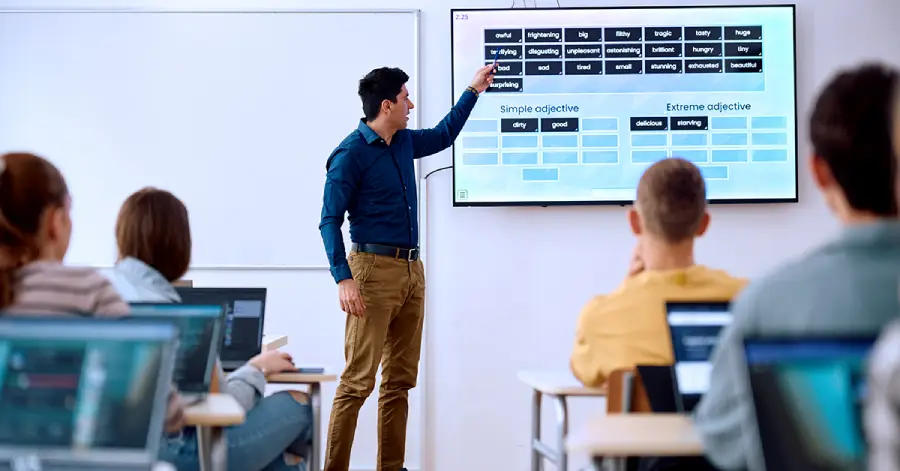6 Signs Your Content Needs a Refresh (And What to Do About It!)
- Published on: July 25, 2024
- |
- Updated on: May 27, 2025
- |
- Reading Time: 7 mins
- |
-
Views
- |
Introduction
Signs It’s Time to Update Your Content
1. Inaccuracies or Outdated Information
2. Learning Materials are Not Engaging
3. Lack of Diverse Perspectives or Inclusivity
4. Assessment Data Shows Poor Performance
5. Failing to Address Workforce Skills
6. New Teaching Methods or Pedagogical Approaches
Conclusion
FAQs
“It’s still mostly good! But I did see new research on that topic we don’t address. I wonder if we have enough learning checks. The students responded really well to this case study, so I don’t want to throw it away. Wait, what’s my budget???”
It can happen quickly, seemingly overnight. It can also be a gradual change, sneaking up on you and your product managers over weeks, months, or even years. Eventually, all content producers will need to decide whether or not it’s time to update (or even throw away, as painful as that idea might be) their existing content or courseware.
Whether you’re making minor refreshes or doing a major overhaul, updating your content will take an investment. That means it needs to be a carefully calculated decision that is timed to align with your company’s needs as well as the needs of the market.
So, how do you know when it’s time to update your content? Here are six signs that might help you make a decision.
1. Inaccuracies or Outdated Information Have Been Discovered in Your Existing Materials.
When I was a kid (in the “long ago” world without many current advancements in digital learning technology), it felt like my instructors were constantly fighting a battle against outdated textbooks. It always seemed like they were adding caveats and pointing out inaccuracies or out-of-date information in the textbooks that were only updated at the district level every few years.
State and national educational governing bodies regularly update curriculum standards. Entities that issue certifications update and modernize their exams and licensing requirements. New research leads to discoveries, industries evolve, and best practices shift. The latest information is readily available to anyone with a device that connects to the internet, so learners today expect the content they consume to be as accurate and up-to-date as possible. But how can you possibly maintain those standards?
Perform regular content audits. Schedule periodic reviews to identify areas needing revision by subject matter experts who are working in the field or well-versed in current field research. Proactively ensure you are aligned with current state, national, or certification standards and stay informed about upcoming changes. Also, establish a system for soliciting updates and corrections from subject matter experts, educators, or even learners themselves! This can be a valuable tool for keeping your content current and credible. (The downside to this approach is that not all feedback will be valuable or usable. But if you get a wide enough sampling of feedback, you will likely begin to see patterns or trends that will help you target your updates.)
2. The Learning Materials Are not Engaging.
I recently attended a conference for innovations in learning and technology. I was pleased that a major theme and focus of the event was centered around learner engagement and how the collective education community (including educators, administrators, and content creators/academic publishers) can enhance and support learners. The EdTech industry has made great strides in the right direction to try and incorporate research-based ideas to improve engagement and efficacy. This is great news because even the most interesting and unique topics can fall flat if presented in a way that fails to capture the learner’s attention.
A curriculum lacking hands-on activities and projects or relying heavily on lectures or text-based learning material can quickly become monotonous. You should also pay attention to your user base! If you’re receiving feedback from faculty members or learners stating that a program or course feels “boring,” that’s a clear sign it’s time for a refresh. How do you tackle this particular problem?
Use interactive elements and multimedia content! If students are clicking through interactivities or checking in regularly with quizzes, polls, and gamified activities throughout your course, they are far more likely to remain engaged and experience positive learning outcomes. As a bonus, these interactive elements can also be used to assess understanding and redirect the learner to support their learning journey. Remember that different educational tools can support individuals with varying learning styles.
3. Lack of Diverse Perspectives or Inclusivity in Your Content.
As a content creator, it is my responsibility to develop content that is as inclusive and representative of our wonderfully diverse world as possible. Content that solely reflects a single viewpoint limits student understanding and fails to prepare them for the complexities of the real world. Let’s avoid this by including diverse perspectives. If your content is based on a single perspective, it’s time to broaden the lens. Integrate case studies, guest lectures, or historical examples that showcase a variety of perspectives and experiences, and include a wide range of characters in your examples and course visuals. Representation helps encourage more individuals to find success as well as the psychological safety needed to explore new topics and ideas.
Accessibility is key for ensuring that all students have equal access to knowledge. Comply with WCAG standards for accessibility by including features like closed captions for videos, alt text for images, and other features that make the content perceivable, operable, understandable, and robust for students with disabilities. This will create an inclusive learning experience where every learner feels seen and heard.
4. Assessment Data Shows Poor Performance, Indicating Learners Aren’t Mastering the Material as Expected.
Here’s where we can use data to help improve content! You are probably capturing all sorts of data and metrics around how, when, and why your courses are being used.
Assessment data can be a powerful tool for identifying weaknesses in your content. Low (or high) scores aren’t always a reflection of the learner’s effort—they could be a sign that the curriculum might not be hitting the mark. Beyond overall grades, it’s crucial to analyze trends in performance on assignments and activities.
Use a data-driven approach to analyze and overcome performance gaps. Common item analysis metrics that many institutions use include item reliability and discrimination, which can help improve the quality of your content and assessment items and also help identify DE&I issues that may not be readily apparent when reading the content.
5. Your Content Fails to Address Current Desirable Workforce Skills and Competencies.
In many (not all) regards, one of the primary goals of education is to make the learner employable. In today’s competitive job market, employers are looking for individuals with traditional education and today’s desirable workforce readiness skills. An example? Let’s say your corporate communications course was released to the market in early 2022. You did a great job incorporating current (at the time) research, your content is diverse and representative, and it’s engaging for learners. But because you published prior to November 30, 2022, you failed to discuss the release of ChatGPT and its impact on the communications industry. (In fact, most companies now want employees to have a solid understanding of AI tools and how to ethically and efficiently incorporate them into their roles, which means a lot of educational content now needs a refresh!)
You can bridge the gap between theory and practice by incorporating real-world applications into your content. Update your curriculum to reflect the latest industry practices and desired skills, preparing learners with the tools they will need to hit the ground running in their chosen fields.
6. New Teaching Methods or Pedagogical Approaches Are Being Adopted that Require Different Types of Content.
Know. Your. Learner. As I mentioned earlier, engagement is critical to successful learning outcomes. Not all learning is designed for all learners! Understand the profile of the individuals who are consuming your content. What do you know about their age ranges? Their expected reading level? Are they expected to have any prior knowledge coming into the course?
Once you understand your learner profile, design your content specifically for those learners and their needs. Take a multimodal approach that incorporates audio tools, visuals, videos or animations, and gamified scenarios to help more learners process the material. Pedagogical methods like active learning emphasize student participation and encourage critical thinking skills. Encourage active learning by incorporating project-based activities, where students delve into real-world problems and collaboratively develop solutions. Use online collaboration tools to facilitate group work and peer learning.
It can be difficult to determine the best time to update your content. However, keeping your content current will likely improve student engagement and learning outcomes. To do so, monitor your market feedback, regularly audit the content, and stay current with trends and the latest pedagogical tools available.
So, with all that in mind, are you ready to take the first step toward content refreshment?
FAQs
Start by conducting a content audit to identify specific areas needing updates. Evaluate factors like the extent of outdated information, learner engagement levels, and feedback from educators and learners. Use this data to determine if a minor refresh or a major overhaul is necessary.
Aim to review and update your content at least annually or biannually. However, stay flexible and ready to make updates as soon as new information, technologies, or feedback necessitate changes. Regularly scheduled audits and feedback loops help maintain content relevance.
Costs can vary depending on the extent of the updates. Minor refreshes might require less investment, while major overhauls can be more costly. Consider factors like hiring subject matter experts, incorporating new technologies, and the time required for development and implementation.
Monitor learner performance and engagement metrics before and after updates. Collect feedback from educators and learners to assess satisfaction and effectiveness. Use data analytics to track improvements in learning outcomes and identify areas for further refinement.
Focus on integrating new trends that complement and enhance the core educational standards. Ensure foundational knowledge remains intact while incorporating contemporary examples, tools, and methodologies that align with current industry practices.

Get In Touch
Reach out to our team with your question and our representatives will get back to you within 24 working hours.


